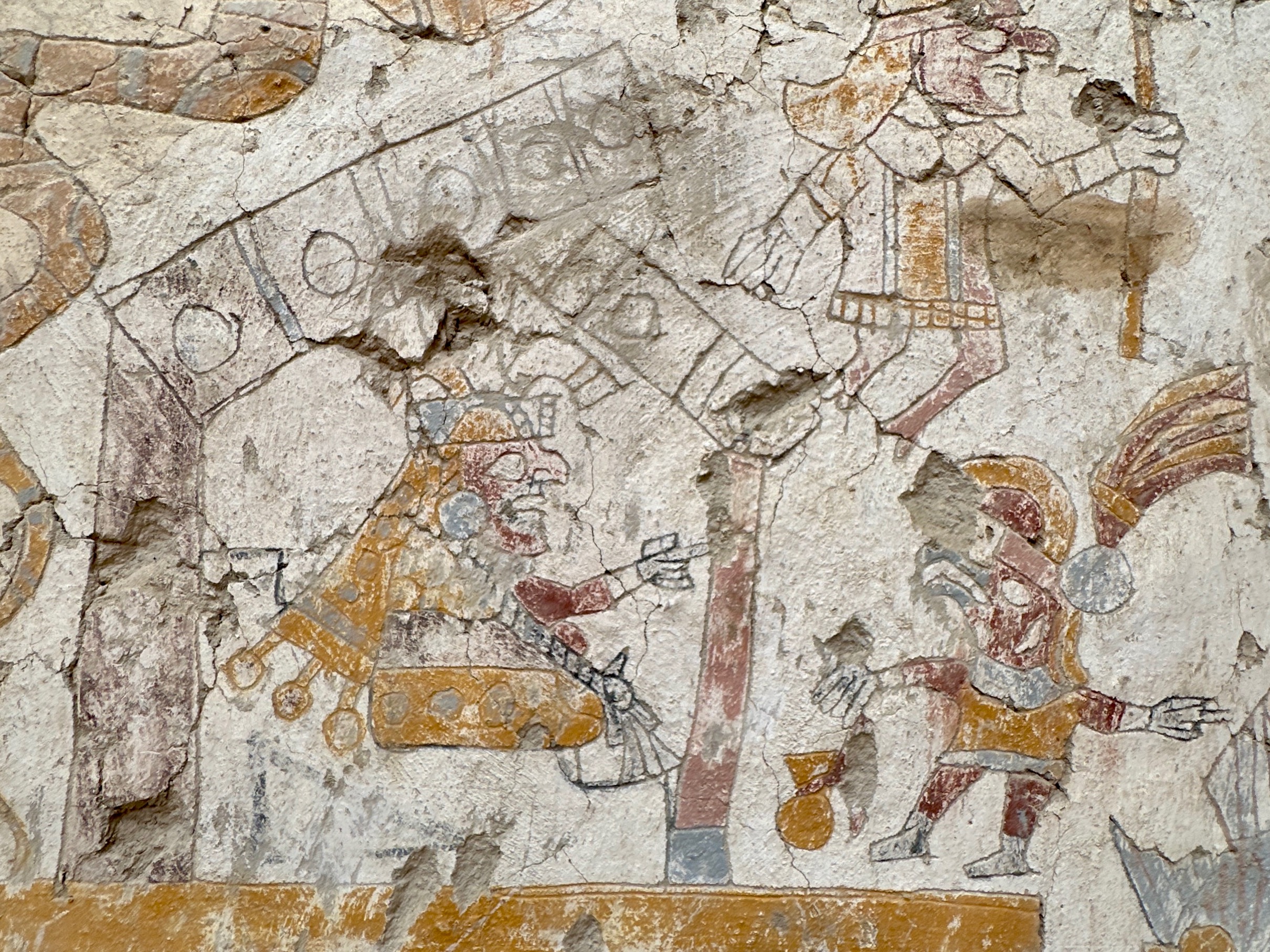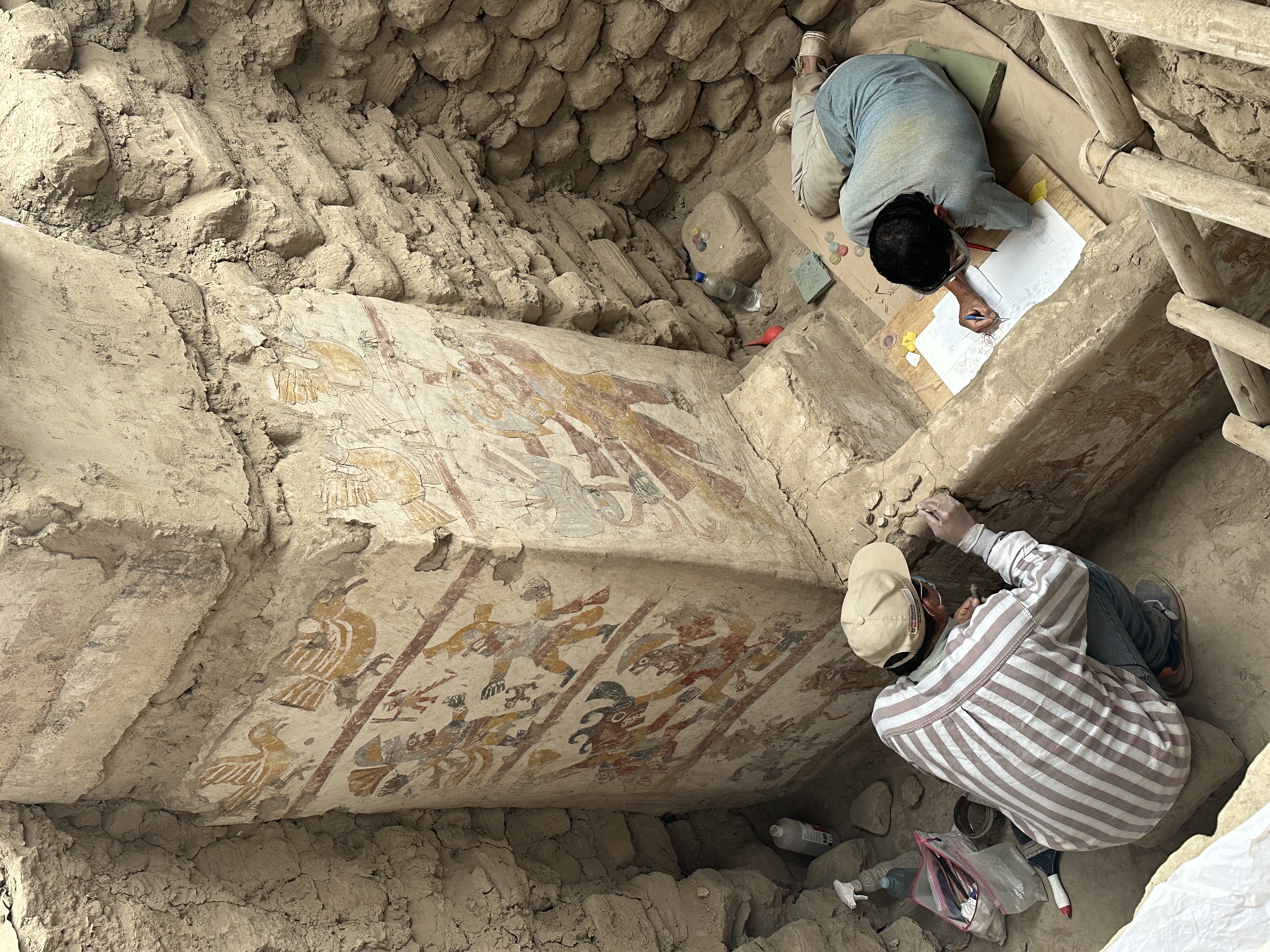See a Newly Uncovered Throne Room in Peru That May Have Belonged to an Ancient Queen
Built by the Moche people in the seventh century, the stunningly painted space shows signs of heavy use, including an eroded throne and traces of human hair
:focal(700x527:701x528)/https://tf-cmsv2-smithsonianmag-media.s3.amazonaws.com/filer_public/67/a9/67a9e453-727b-4a17-b9e9-f262d234f77e/lede.jpg)
Archaeologists have discovered a richly decorated throne room on the northern coast of Peru that may have belonged to a female ruler of the Moche culture some 1,300 years ago.
The room is located in Pañamarca, an archaeological site built and occupied by the Moche, an Indigenous civilization that flourished between roughly 350 and 850 C.E.—centuries before the better-known Inca built Machu Picchu to the southeast. Rediscovered by archaeologists in the 1950s, Pañamarca contains monumental adobe platforms, walls and temples, as well as elaborate, colorful murals.

Peruvian and American researchers associated with the Archaeological Landscapes of Pañamarca research program have been studying the ancient Moche site since 2018. During their most recent field session, they found an adobe throne room dating back to the seventh century inside Pañamarca’s so-called Hall of the Moche Imaginary. According to a statement, the room’s walls and pillars are covered in painted scenes involving a “powerful woman.” In one work, she receives a line of visitors; in another, she’s seated upon a throne.
These ancient murals “could indicate it was a woman who used the space, possibly a ruler,” project director Jessica Ortiz Zevallos tells Reuters.
The woman in the paintings appears to be linked to the sea, the crescent moon and craftsmanship. One of the recently uncovered murals shows a workshop full of women spinning and weaving, along with a line of men carrying textiles and “the female leader’s crown, complete with her braids,” per the statement.

“There is not a surface in this area that is bare,” project archaeologist José Antonio Ochatoma Cabrera tells Reuters. “Everything is painted and finely decorated with mythological scenes and characters.”
Since researchers began studying Pañamarca, they’ve found murals depicting priests and priestesses, warriors, supernatural beings, a two-faced man, and ceremonies involving prisoners. But the statement notes that “a throne room for a queen has never been seen before at Pañamarca, nor anywhere else in ancient Peru.”
“Pañamarca continues to surprise us,” says Lisa Trever, an art historian at Columbia University, in the statement, “not only for the ceaseless creativity of its painters but also because their works are overturning our expectations of gender roles in the ancient Moche world.”
The scholars are unsure whether the woman depicted in the throne room’s murals was mythical or real, let alone whether she was a priestess, a goddess or a queen. Still, they’re certain that the room was heavily used: The back of the throne is eroded, and the team found greenstone beads, fine threads and human hair on it.
Together, the signs of wear “make clear that [the throne] was occupied by a real living person—and the evidence all points to a seventh-century woman leader of Pañamarca,” the statement says.
Speaking with Artnet News’ Richard Whiddington, Trever says the findings “tell us that powerful [Moche] women were not merely ‘priestesses,’ but that they were leaders who wielded sociopolitical power as well.”
/https://tf-cmsv2-smithsonianmag-media.s3.amazonaws.com/filer_public/91/0a/910a6e6c-e30e-4ea8-bf08-7afb731f0b58/panamarca-202324-22.jpg)
During the same field session, researchers discovered another room overlooking the site’s main square. Dubbed the Hall of the Braided Serpents, its many pillars are decorated with paintings of snakes intertwined with human legs—a previously unseen motif in Moche art. Its walls sport murals of warriors, weapons and a man-chasing monster.
The Moche people painted with dampened mineral pigments like iron oxides and clays. Some of their famous murals can be found at their temples of the sun and moon near present-day Trujillo. The culture mysteriously disappeared in the ninth century, leaving behind no written records.
For now, the researchers are focused on protecting and preserving the Moche’s unique and colorful art.
As Trever tells Artnet News, “We often say that Pañamarca was a place of unprecedented creativity, and every season, it seems like that point becomes even more true.”
/https://tf-cmsv2-smithsonianmag-media.s3.amazonaws.com/accounts/headshot/Sonja_headshot.png)
/https://tf-cmsv2-smithsonianmag-media.s3.amazonaws.com/accounts/headshot/Sonja_headshot.png)